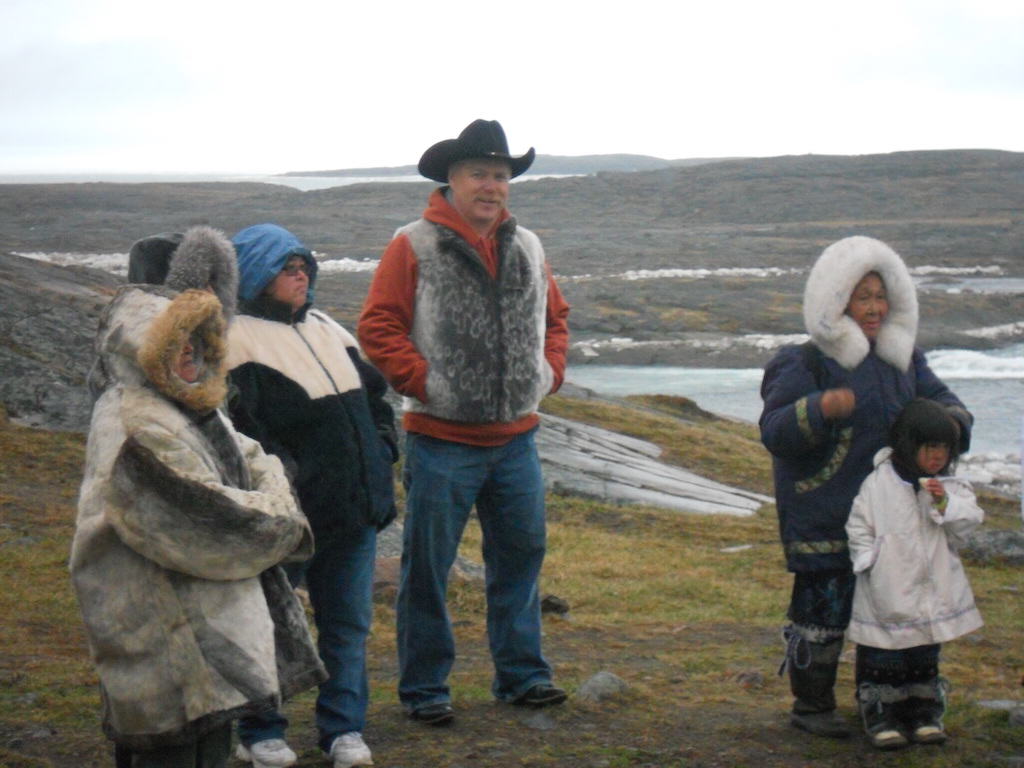
The Israeli Government recently announced that permits for the importation, fabrication or sale of fur will no longer be issued, except for religious, scientific, or educational purposes. In short, the fur business will be effectively banned by regulation, by-passing the normal legislative process that was tried — and failed — a decade ago. This short-circuiting of due process is justified because banning fur is a moral issue, claims Minister of Environmental Protection Gila Gamliel. “Utilizing the skin and fur of wildlife for the fashion industry is immoral,” she insists. But she’s so wrong.
What does it mean to say that using fur – or any other animal product — is “immoral”? Some of the best research into public attitudes about using animals was done by the Canadian Royal Commission on Seals and Sealing. Based on opinion polling in six Western democracies (the UK, France, Germany, Norway, Canada, and the US), the Commission determined that four criteria must be met for animal use to be considered morally acceptable. Let’s see how the modern fur trade measures up to these four criteria:
1. Sustainability

For animal use to be considered morally acceptable, it must not threaten the survival of the species. So it’s important to know that all the fur used today comes from abundant populations, and never from endangered species.
Eighty percent of fur is produced on farms, so there’s no threat to wildlife there.
The remaining 20% — the wild fur trade — is strictly regulated in North America by states and provinces, and internationally under the Convention on International Trade in Endangered Species, or CITES. These laws and regulations ensure we are using only part of the surplus that nature produces each year, because beavers, muskrats, martens, raccoons, and other furbearers produce more young than their habitat can support to adulthood.
The regulated fur trade is, in fact, an excellent example of “the responsible and sustainable use of renewable natural resources”, as promoted by the International Union for Conservation of Nature (IUCN).
2. Animal Welfare

The second criterion for moral acceptability is that the animals we use should suffer as little stress or pain as possible. The modern fur trade takes this responsibility very seriously.
In Canada, mink and fox farmers follow codes of practice developed under the auspices of the National Farm Animal Care Council (NFACC), with veterinarians, animal scientists, and animal-welfare authorities. Other countries have similar production codes, and farmers have every reason to follow them, because the only way to produce high-quality fur is to provide optimal nutrition, housing, and care.
Animal welfare is also a priority in the wild fur trade: Canada has been a world-leader in humane trapping research and innovation since the 1970s. This research, coordinated by the Fur Institute of Canada, has resulted in improved trapping systems, trapper training, and regulations, and the Agreement on International Humane Trapping Standards.
Activist claims about fur animals being “skinned alive” or otherwise mistreated have been thoroughly and repeatedly debunked.
3. Important Use

A third moral criterion revealed by the Royal Commission is that animals should not be killed for “frivolous purposes”. This argument is at the core of much anti-fur campaigning, and is echoed by Gamliel in her assertion that it is immoral to kill animals “for fashion”.
Gamliel conveniently ignores the fact that animal-rights activists now openly oppose any use of animals, even for food. But to address the point at hand, humans have to wear something, and there is nothing frivolous about our need for long-lasting, eco-responsible clothing.
The fake furs and other synthetics promoted by animal activists are usually made from petroleum, a polluting, greenhouse gas-producing, non-renewable and non-biodegradable material. We now also know that these synthetics (which represent 80% of our clothing) leach nano-particles of plastic into our waterways each time they are washed, plastics that are now being found in the digestive tracts of marine life and even our drinking water. Cruelty-free indeed!
Fur, by contrast, is a long-lasting, renewable, recyclable, and ultimately biodegradable natural clothing material. So wearing fur is not so frivolous after all, especially at a time when we are trying to develop more sustainable lifestyles.
4. Complete Use

The fourth criterion for moral acceptability is that when an animal is killed to benefit humans, there should be no waste. This is why most people – animal-rightists excepted – consider it morally acceptable to use leather, because it’s the envelope that dinner came in. We ate the meat, so why not wear the skin?
All too often, however, people fail to understand that fur also respects this “no waste” principle.
In fact, farmed mink and fox help to reduce waste in our food production system, by consuming the parts of cows, chickens, pigs, and fish that humans don’t eat. Furthermore, the manure, soiled straw bedding, and carcasses of farmed mink and fox are composted to produce organic fertilizer, returning nutrients to the soil and completing the agricultural cycle.
Meanwhile, beavers, muskrats and other wild furbearers provide food for trappers and their families, or are returned to the bush to feed other animals through the long, cold winter. Nothing is wasted.
Inconvenient Facts

If Minister Gamliel were to honestly apply the criteria above, she would have to acknowledge that the modern, well-regulated fur trade is as morally responsible as other commonly accepted uses of animals in our society, for food, clothing and other purposes.
And there are other serious problems with her “immorality” argument.
In North America (and other regions) where wild furbearers actually abound, populations have to be managed whether we use the fur or not. Overpopulated beavers flood farmland, roads, and homes; raccoons and foxes become more susceptible to rabies and other dangerous diseases; coyotes prey on livestock and are now taking pets in urban areas; and the list goes on. But if some of these animals must be culled to protect property and health, is it “immoral” to use their furs? Quite the opposite, in fact. The immoral deed would be to throw those furs away.
Meanwhile, Gamliel faces some moral dilemmas on her own doorstep, because her proposed ban would exempt furs used for “religious purposes”. Obviously her intent here is to neutralize opposition from ultra-orthodox coalition partners, whose haredi men wear large fur hats, or shtreimels, on the Sabbath and other Holy Days. But these hats don’t reflect any true religious practice; actually, they are rooted in 17th-century Eastern European fashion. Gamliel’s exemption is driven solely by political expediency. So much for moral imperatives!
Then there’s the inconvenient fact that the sacred Torah – the very heart of Judaism – is written on parchment, which is an animal pelt with the hair scraped off. Similarly, the prayers scrolled inside the mezuzot that grace every door of a Jewish house are also written on animal hides.
But what of the Jewish doctrine of bal tashchit – “do not destroy”, which is often cited by animal activists in Israel? In fact, bal tashchit is derived from a commandment in the Torah to not destroy fruit trees outside the walls of a city under siege. It is a recognition that people will need food, no matter who wins, and is one of the world’s first written environmental protection laws. It promotes responsible use and sustainability. But it certainly does not command us to abstain from using animals to meet human needs.
The Politics of Morality

In light of all the above, it is clear that Gamliel’s proposal to ban fur has nothing to do with morality. Rather, it is just politically expedient virtue-signalling to curry favour with Israel’s strong animal-rights lobby, while the financial cost is born by farmers and trappers half a world away.
Apart from streimmels, there is little fur trading in Israel, which is why international animal-rights groups have identified it as an easy target, a thin edge of the wedge. But if one country should understand the dangers of embracing calls for scapegoating and ostracizing the fur trade, it is Israel, which itself is targeted by the militant Boycott, Divestment and Sanctions movement (BDS) on university campuses around the world – often the same people who campaign against the fur trade!
No one is obliged to wear fur – or leather or wool, or to eat meat or dairy. Everyone is entitled to draw their own line concerning the appropriate use of animals, so long as sustainability and animal welfare concerns are respected. What cannot be justified in a modern democracy are political bans aimed at imposing one group’s views on everyone else.
When a ban on fur trading was last proposed in Israel, ten years ago, I testified before a Knesset committee hearing on behalf of the International Fur Federation. I reminded the committee members that animal-rights activists also campaign against kosher slaughter in many European countries, in concert with anti-semitic hate groups. I also reminded them that Jews — including my own family — have played a prominent role in the international fur trade, and that anti-fur campaigns have sometimes included anti-semitic innuendos.
The turning point in the committee meeting, however, came when the chairman read from a letter received that morning from then Canadian Minister of International Trade Peter Van Loan. Van Loan reminded the committee that Canada has always been a loyal friend and ally of Israel, and that the regulated fur trade supports the livelihoods and cultures of thousands of First Nations and other Canadians, especially in rural and remote regions. The governments of Denmark, Greece, the US, and the EU also expressed concern at a proposal that would scapegoat a responsibly regulated and sustainable industry. Suddenly, there was a political cost to banning fur. The proposal was quietly dropped.
This time around, Gamliel hopes to side-step the legislative process and ban fur trading with a simple regulatory change, a much quicker procedure. It is important that people who support the fur trade and consumer freedom again call on their own governments to intervene, to put some balance into this discussion. (See, below)
Let me conclude with a last word about shtreimels. While there’s no theological basis to the tradition of donning these splendid sable-trimmed hats, haredi men often say that the beauty and craftsmanship of a shtreimel show respect both for the Sabbath and for the animals that were used to make it. Fur apparel is, in fact, a marriage of the beauty of nature with human creativity. Wearing fur should remind all of us of our dependence on nature, and of our responsibility to protect it. If we wear fur with this consciousness, it becomes a moral act. The Israeli Minister’s cynical proposal to ban fur most certainly is not.
WHAT YOU CAN DO
It is unclear how quickly the regulatory change proposed to ban most fur trading in Israel can be implemented, but it is likely that only international diplomatic pressure can stop it. Ask your government to express concern about this arbitrary and anti-ecological ban. The following links may help.
CANADA
Embassy of Canada in Israel
Embassy of Israel in Canada
Find your Canadian Member of Parliament
Prime Minister Justin Trudeau email: [email protected]
Minister of Foreign Affairs Francois-Philippe.Champagne email: [email protected]
UNITED STATES OF AMERICA
Embassy of the US in Israel
Embassy of Israel in the US
Office of the US Trade Representative
***
To learn more about donating to Truth About Fur, click here.










